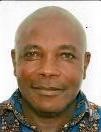Ghana is leading the advancement of gender equality in the West and Central Africa region. Women in Ghana have made progress in human endowment in health and education at rates significantly higher than their sub-Saharan Africa (SSA) peers . While this picture is optimistic, improvements in human endowment outcomes have not translated into improved earnings, access to assets, and decision-making. Many gaps persist, especially for rural women and girls.
Girls and women in rural areas face higher barriers
Women and girls in rural parts of Ghana have less access to education and health facilities than their urban counterparts.
Girls in rural areas lag in attendance, performance and completion of both primary and secondary school, and are more likely to face socio-cultural barriers, such as teenage pregnancy, child marriage, and uneven domestic burdens. Only 79 percent attend primary school in rural areas compared to 86 percent in urban areas, and 18 percent in rural areas are teenage mothers compared to 11 percent in urban areas.
The knock-on effect in health and education is a further barrier to women’s labor market participation.
Ghana has strengthened women’s legal rights and opportunities in the labour market, and women are now participating in the labour market at higher rates (65 percent) compared to other SSA countries (63 percent). This positive trend, however, has not translated into better economic opportunities for all women.
Women are more vulnerable in the labour market as their employment is precarious: 77 percent of women are in vulnerable jobs compared to 58 percent of men. Likewise, rural women are mostly self-employed and earn less due to the informality of their work. Women often choose self-employment to balance income generation with child-care and other domestic tasks, and this prohibits them from working in the formal sector and getting high-pay jobs to improve their livelihoods.
In addition to facing barriers that put women in low-earning jobs – mostly in the informal agriculture sector, a vast majority of women-owned businesses lack access to fundamental assets to improve their productivity for higher revenues.
Limited access to land and other productive assets exacerbates women’s financial exclusion as they are unable to use property as collateral. Although the law protects women’s property rights and ownership, restrictive social norms restrict their right to own and use property. About 8 percent of women own land compared to 30 percent of men.
Women and girls are less likely to participate in decision-making
Women’s inclusion into decision-making processes in Ghana is still low . They represent only 15 percent in National Parliament, and management positions in the private sector include only 27 percent women.
Gender-based violence continues to be high in Ghana. The most common forms of domestic violence reported by women were economic violence (13 percent), social violence (12 percent), psychological violence (9 percent), physical violence (6 percent), and sexual violence (3 percent). Furthermore, women and girls with disabilities are twice more likely to have experienced sexual or physical violence. Women with disabilities are more likely to be physically dependent on an intimate partner, be poorer, have less education, and be seen as more vulnerable by that partner.
Social norms drive these gender gaps. Social norms are sets of informal rules that shape the attitudes, behaviours and roles of women and men in society. These norms continue to limit Ghanaian women’s access to and use of opportunities at the same rate as men and boys, and further exclude them from social and economic empowerment.
As gendered social norms continue to exclude women from key opportunities across their lifecycle, onset shocks, such as climate change, COVID-19 and high inflation pose new challenges and exacerbate gender gaps across all sectors . This is particularly true in the rural and northern areas where women are more likely to be multi-dimensionally poor.
A multi-pronged approach to reduce barriers
To address these multi-faceted gender gaps, the World Bank has recently developed a Ghana Country Gender Action Plan (C-GAP) to guide the portfolio in Ghana. The C-GAP is a country-driven analytical and operational roadmap for greater social and economic inclusion of women and girls through operations, policies and advisory work.
It is collaboratively implemented with all the World Bank Global Practices, International Finance Corporation (IFC), and the Country Management Unit in collaboration with the Government of Ghana and development partners. It will take a multi-pronged approach that cuts across multiple sectors to reduce the various economic and social barriers that women face.










